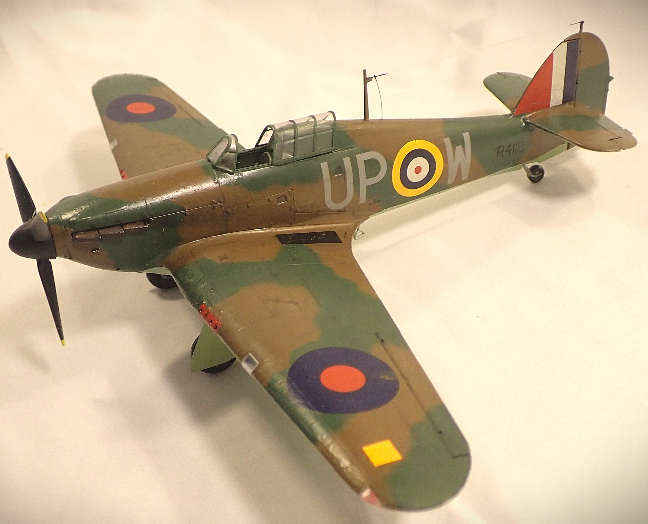The Hawker Hurricane was one of the first monoplane fighters to see service with the RAF and with the FAA in the form of the Sea Hurricane. It is without a doubt one of the most recognisable and revered fighters of the period. It was designed by Sir Sydney Camm based on a monoplane version of the Hawker Fury. Despite the resounding preference of the biplane during the mid-thirties Hawker pursued the project incorporating many innovative designs including fully retractable landing gear and the use of the more powerful Rolls-Royce Merlin engine. The Air Ministry, despite reservations, ordered a prototype in 1934 which made its maiden flight on 6 November 1935. Production followed in June 1936, and the first Hurricanes went into service in December 1937. It stayed in manufacture until 1944 with over 14,400 being built.
The Hurricane is a low set wing, cantilever monoplane with retracting undercarriage and an enclosed cockpit. Initial complications with the Merlin I engine meant a delay in production. 180 of the first batch were powered with the problematic engine. The Merlin II resolved the issues and 600 were initially ordered by the Air Ministry.
Hurricanes were initially equipped with stretched fabric wings, but these were changed to a stretched metal wing in early 1939 which made for a better performance. The stretched fabric fuselage remained, however, making the Hurricane very resilient to damage and making repair much easier. The type was initially designed with synchronised guns either side of the cockpit but the Mk.I was redesigned with four Browning .303 machine guns mounted in each wing. The Mk.IIB was fitted with two extra guns in each wing making a total of 12 .303 Browning. An improved Merlin XX engine powered the Mk.IIB making it 4.5 inches longer than the Mk.I and II. The Hurricane Mk.III was armed with four 20mm cannon.
The Hurricane was produced in far greater numbers than its counterpart the Spitfire and was the predominant RAF aircraft at the beginning of the conflict in 1939 being deployed with 16 squadrons with another 2 in the process of converting to the new aircraft. The Hurricane, in various marks, was to serve with the RAF and FAA throughout the war gaining distinction in all theatres of the conflict, notably in the Battle of Britain, defence of Malta, North Africa and the defence of Singapore.
Hurricanes were removed from frontline service in late 1944 but continued in other roles after the war and finally retired in January 1947. Many surviving Hurricanes exist in Museums around the world with at least 15 still in airworthy condition. Two Hurricanes fly with the Battle of Britain Memorial Flight, a Mk.IIC LF363 and a Mk.IIC PZ865.
